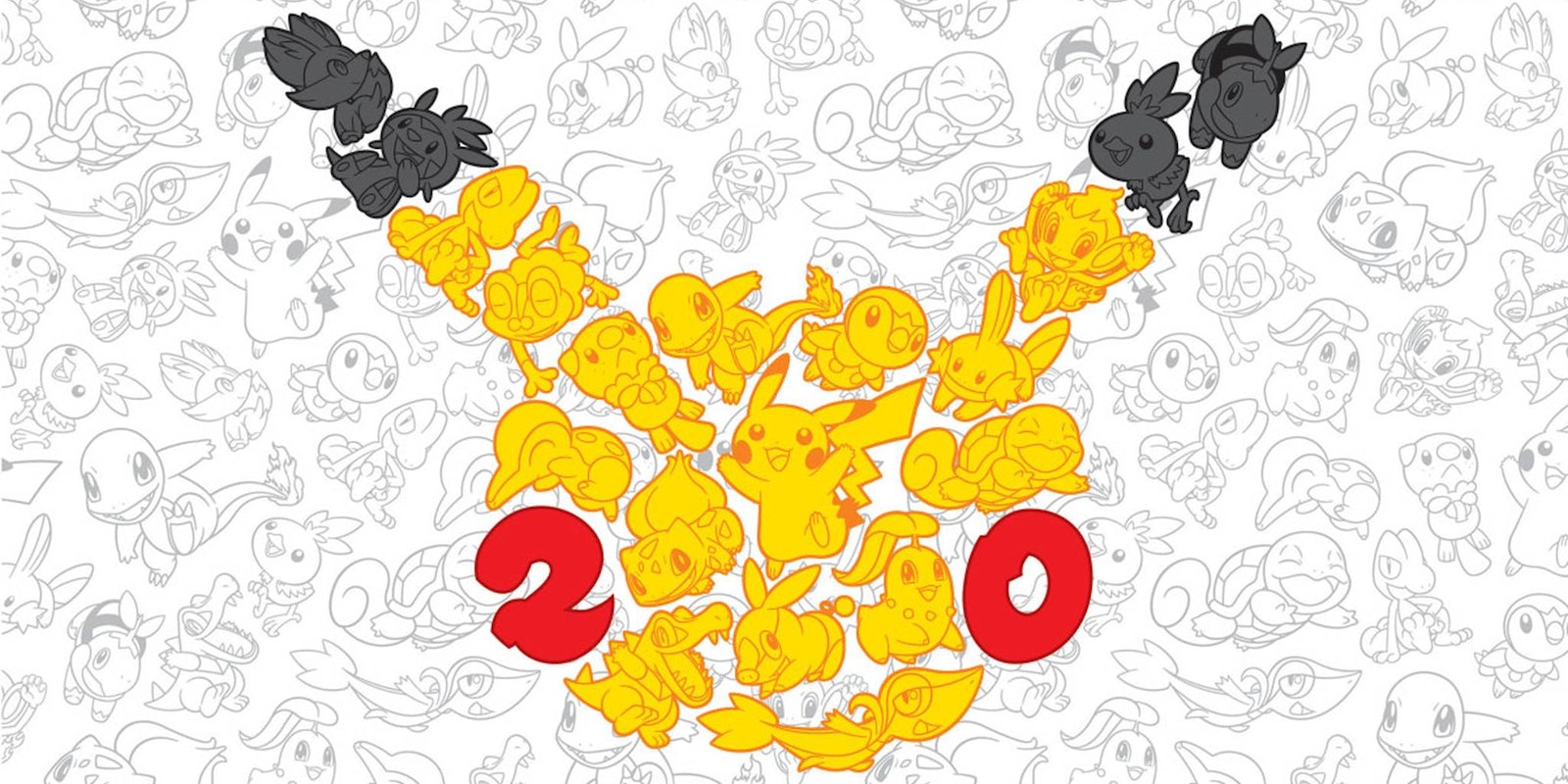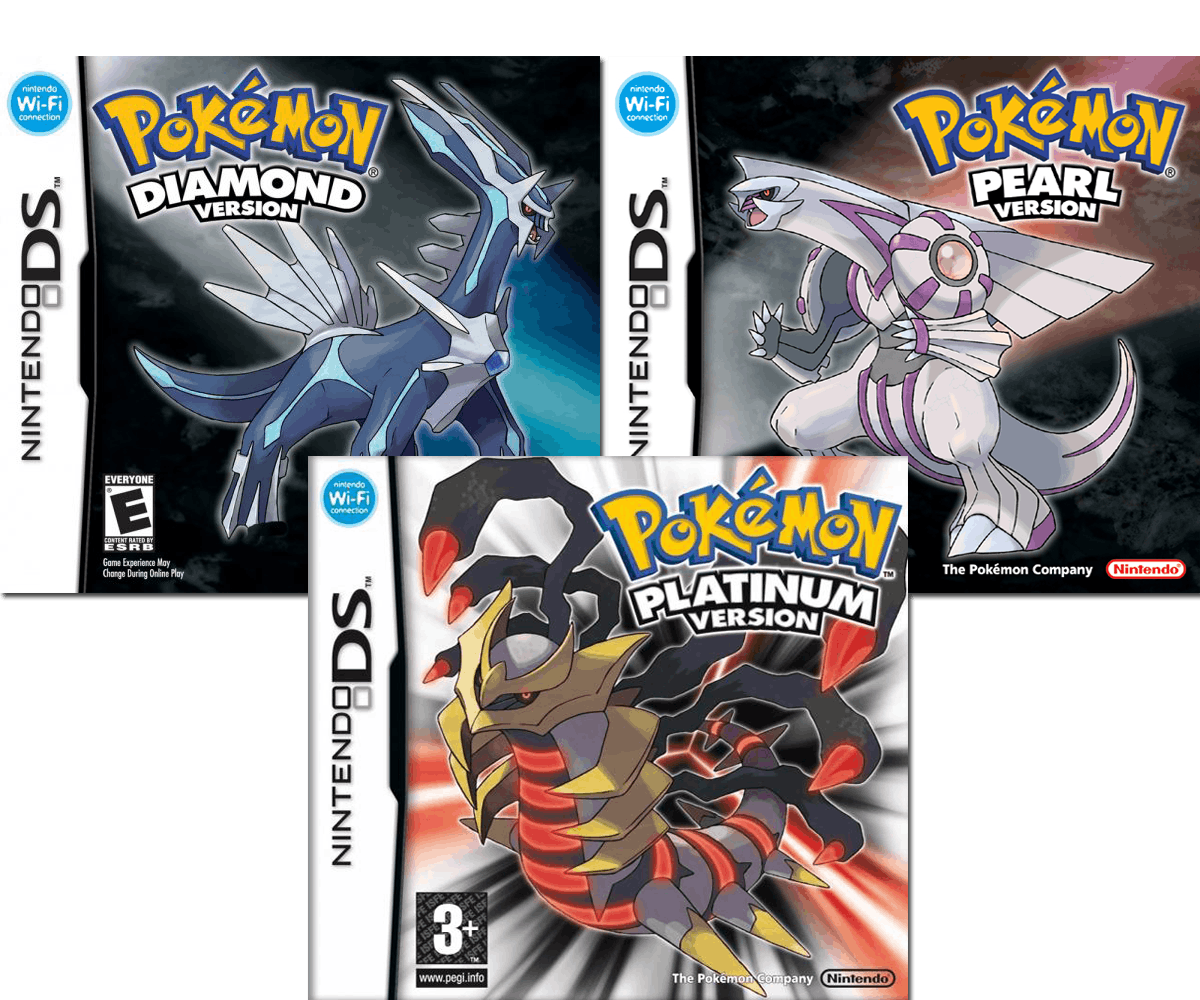The Pokémon franchise celebrated 20 years in 2016 with the debut of Pokémon Sun and Moon.
As the seventh generation of the Pokémon franchise, Sun and Moon pay tribute to what came before while blazing a bold new path forward. Despite all the changes and new features, however, the question still remains: How do Sun and Moon stack up to the series’ previous entries?
To celebrate the 20th anniversary of one of gaming’s most iconic franchises, we looked back at each Pokémon generation to decide which games are the true champions. (Looking for the best Pokémon spinoff games? We’ve got you covered here.)
7) Generation 4
While not bad games by any means, Diamond and Pearl represent the Pokémon series at its weakest. The story is a diluted mess of interdimensional nonsense with a flat villain whose only motivation is to become the ruler of space and time. The Sinnoh region is one of the least-inspired environments in any Pokémon game, full of mountainous terrain and not much else.
Another big problem with this pair of games was the new Pokémon to collect. Many of them were evolutions or baby forms of already-existing Pokémon, and couldn’t be obtained until after the main adventure.
The Platinum Version came along and fixed many of the issues with the boring region and its poor Pokémon offerings, but it remained a mostly linear game with an uninspired story. The Sinnoh region does offer great starter Pokémon, and hunting down legendary creatures like Giratina and Heatran after completing the story provided plenty of thrills.
6) Generation 6
X and Y brought handheld Pokémon into the third dimension, and while the games were great to look at, they didn’t offer much else in terms of innovation. This generation introduced Fairy Pokémon, the first new type since 1999, and Mega Evolution, offering new looks for old favorites. X and Y relied on tried and true mechanics too frequently, however, and they debuted the smallest number of new Pokémon in any generation. X and Y played too safe when it came to significant changes, but were a great dose of nostalgia for longtime fans.
These games had a momentous task to accomplish: bring the familiar world of Pokémon to a new engine on the 3DS. The story and villains were instantly forgettable, and outside of collecting Mega Stones and competitive training, there was too little to do after beating the Pokémon League. Still, X and Y were a respectable reintroduction to what makes Pokémon so special.
5) Generation 1
Where it all started, Pokémon Red and Blue unfortunately show their age in 2016. Everything about the Kanto region, its Pokémon, characters, towns, and cities, are as iconic as anything Pokémon-related can be. Each of the original 151 creatures is memorable and well-designed, but Red and Blue versions are nonetheless a chore to play through. There aren’t many strong moves to teach your Pokémon, and some easily exploited combos and issues with individual stats can cause a number of problems on any given playthrough.
Still, the story of a young trainer rising to take down Team Rocket and mastering the Pokémon League remains just as engaging now as it was in 1996. Remakes of this generation, FireRed and LeafGreen, are now the definitive way to experience this story, and going back to the originals might encourage long-time fans to remove their rose-tinted glasses.
4) Generation 7
Pokémon Sun and Moon are the most distinct take on the Pokémon formula in the main series of games. They wear their Hawaiian influence on their sleeves, making for an exciting adventure with fantastic music and colorful visuals. Sun and Moon build on the foundation built by X and Y, making full use of the 3DS’s technology. The Alola region introduces a range of new creatures with interesting abilities and types, as well as fresh tropical takes on a few older designs.
Gym battles and HMs, two huge staples of the Pokémon franchise, are ditched this time around. After playing through Sun and Moon, it is hard to imagine going back to these mechanics after the Alola region wonderfully succeeds without them. The story and characters of Sun and Moon are engaging, emotional, and exciting, and the mysteries of Ultra Beasts will keep players intrigued after the initial credits roll.
3) Generation 3
Before Sun and Moon’s tropical take on Pokémon, the Hoenn region was known as the tropical paradise in the Pokémon world. Ruby and Sapphire made use of the GameBoy Advance to move Pokémon into a new age, bringing a generation full of original, creative creatures. Pokémon music has never sounded better than the adventurous horns and sweeping synths that scored this adventure, and the environments were memorable additions to the Pokémon mythos.
Ruby and Sapphire aren’t without their problems, though, surfing back and forth around the world can become a chore, and there isn’t much to do post-story outside of challenging the Elite Four again. Emerald Version added the Battle Frontier, a challenging spin on competitive Pokémon battling, which provided even more to accomplish in Hoenn.
2) Generation 2
Gold and Silver needed to prove that Pokémon’s popularity wasn’t just a fluke. These games introduced the first batch of new Pokémon outside the original 151, and they slowly crept their way into marketing, the anime, and movies. But rather than a retread of familiar ground, Gold and Silver spun the formula into a more complex, challenging, and complete adventure. New types balanced the problems of Red and Blue, the day and night cycle added new strategy, and new mechanics made catching Pokémon more exciting.
These titles also served as a direct sequel to the original games, allowing players to revisit Kanto and see how it changed since their first adventure. The fallout of Team Rocket’s takedown and a legendary showdown with Red at the game’s climax made the Johto region feel like an organic, populated place. The mysteries of the legendary Pokémon paired with all the new features to discover made this generation a fully realized expansion of the Pokémon franchise, setting it down the right path.
1) Generation 5
Black and White took a massive risk bringing players into a new world where none of the creatures they recognized were available. Fans lashed out about this choice, criticizing the designs of several Generation 5 Pokémon, but with nearly 150 new monsters to collect, the Unova region was populated with personality. Black and White added a massive amount of new features, including having Pokémon move in battle for the first time. With the Pokédex sitting at almost 500 total creatures to collect, they remain as complete as a Pokémon package can get.
Unova’s cities are as dense as any to date, and the story introduced several well-written characters. When Black 2 and White 2 hit a few years later, they extended the story and mysteries to make this generation feel like a fuller experience and added earlier Pokémon back in, amounting to a massive available selection. The multiplayer features were directly integrated into every facet of gameplay, easily accessible with a touch of the DS’s bottom screen Between the excellent first pair of games and their improved sequels, Generation 5 offered an irresistible amount of content to keep any Pokémon trainer busy for quite a long time.









